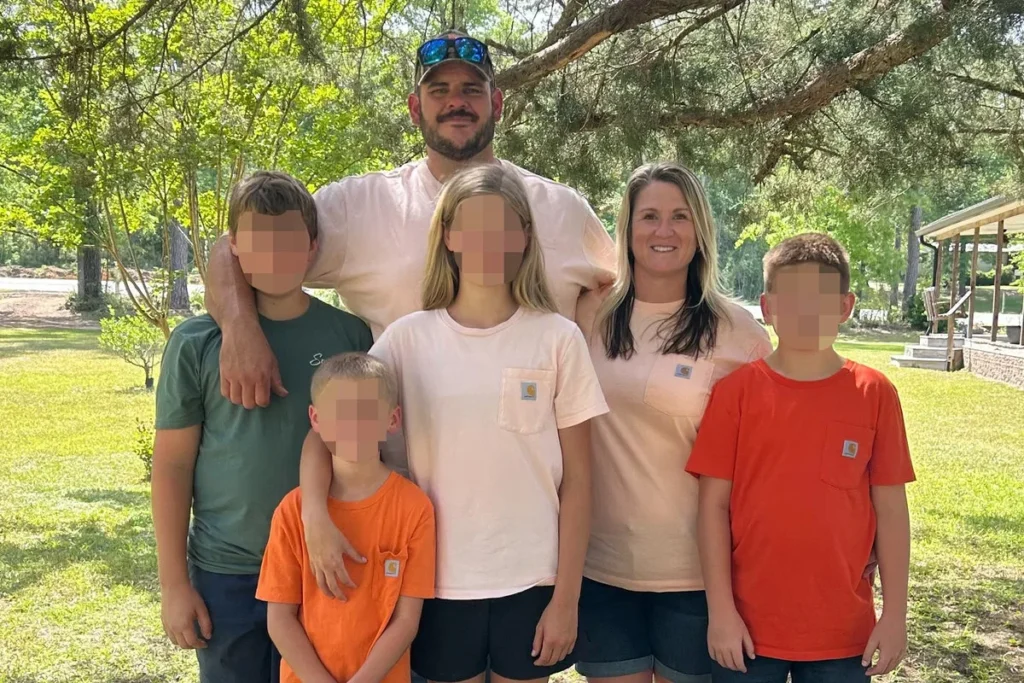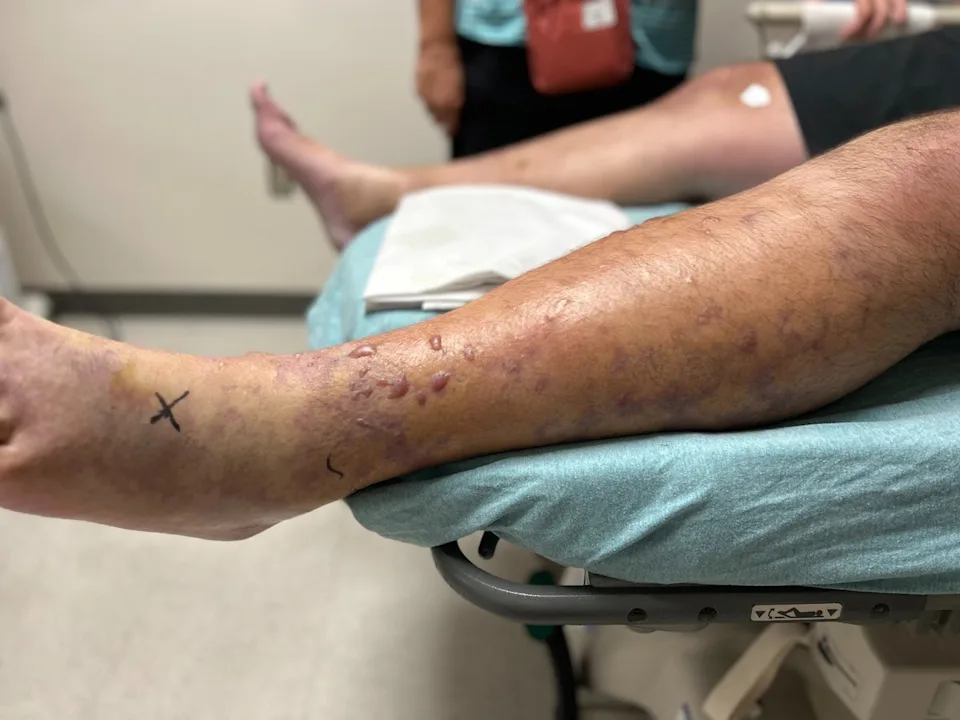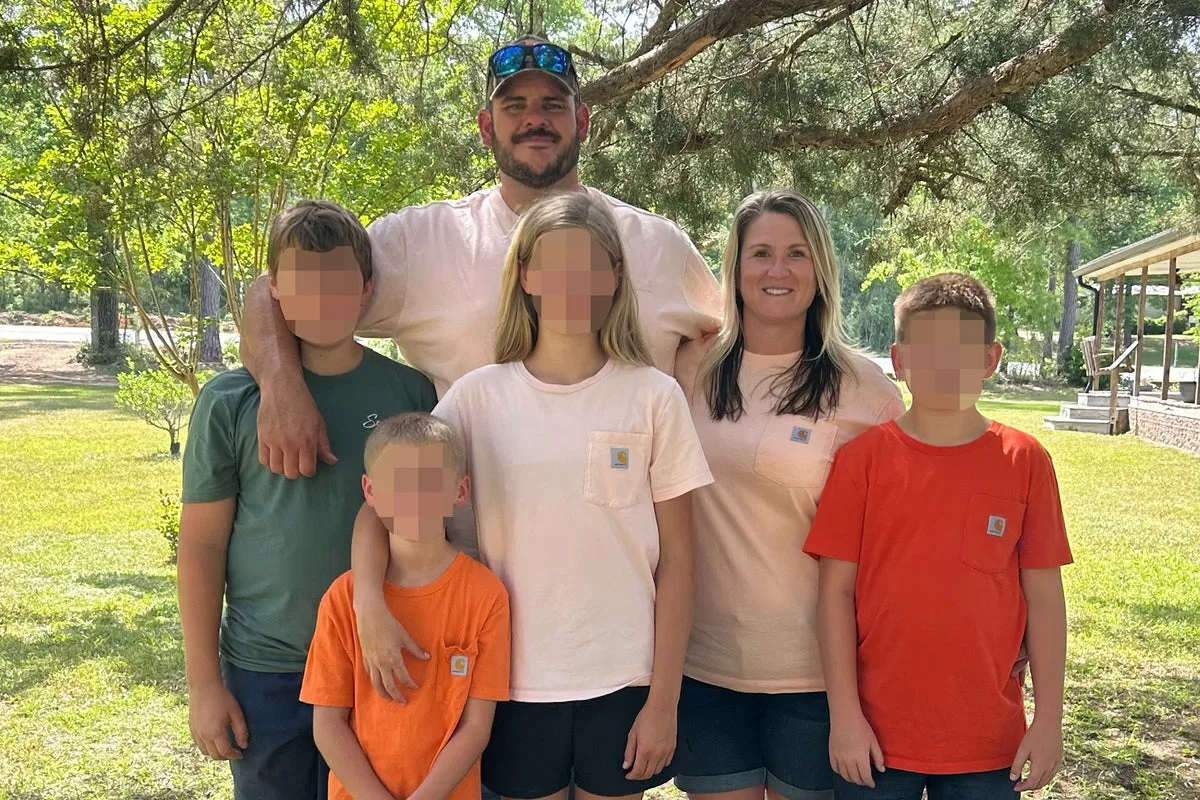A Florida father recently endured a terrifying battle with a flesh-eating bacterial infection that left his leg covered with giant, painful sores and a precarious prognosis. His struggle highlights a growing public health concern as cases of Vibrio vulnificus, a dangerous flesh-eating bacteria, continue to rise in warmer coastal waters across the United States. This article explores his story and delves into the causes, risks, and prevention measures related to this serious condition.
The Harrowing Experience of a Florida Father

In Florida, a father found himself fighting for his life after contracting Vibrio vulnificus. The infection left his leg severely damaged, covered in large, painful wounds that reflected a rapidly advancing attack on his flesh. His initial symptoms may have seemed minor, but the infection progressed quickly, necessitating emergency medical intervention to halt what is commonly known as a flesh-eating bacterial infection. Despite the severity, medical teams worked diligently to save his leg from amputation, a glimpse of hope in an otherwise grim situation.
What is Vibrio Vulnificus?
Vibrio vulnificus is a bacterium found naturally in warm coastal waters, particularly in the Gulf of Mexico and along the East Coast. It thrives in warm, brackish waters, especially from May through October, when coastal waters reach temperatures ideal for bacterial growth. This bacterium can infect individuals through open wounds or by consuming raw or undercooked seafood, chiefly oysters, which filter the bacteria from the water.
While Vibrio infections are rare, they are severe and can escalate quickly. The bacterium is infamous for causing necrotizing fasciitis, a condition where infected flesh dies and spreads rapidly, sometimes requiring emergency surgeries including limb amputations. One in five people infected with Vibrio vulnificus faces life-threatening complications, with death occurring swiftly if untreated.
Rising Cases Linked to Climate Change
Health experts have noted a troubling increase in Vibrio vulnificus infections, attributing the rise to climate change and warming coastal waters. Warmer temperatures allow the bacteria to survive longer and proliferate more, leading to more frequent outbreaks. This seasonal rise in bacteria populations has been recorded in several coastal states, including Florida, Louisiana, and Mississippi, leading to multiple hospitalizations and deaths each year.

According to researchers, the warmer ocean temperatures persist longer into the year, increasing the baseline level of bacteria in the water and contributing to more severe outbreaks. This trend shows no signs of reversing, prompting public health officials to issue warnings and advise precautions to reduce risk.
Symptoms and Warning Signs
Infections caused by Vibrio vulnificus can start with symptoms similar to food poisoning, such as diarrhea, cramps, nausea, vomiting, fever, and chills. However, when the bacteria enter through wounds, symptoms can worsen dramatically. Individuals should watch for signs such as redness, severe pain, swelling, discoloration of the skin, blistering, and fluid leaking from open wounds.
The progression can be rapid, and symptoms such as fever, chills, and shock-like features may develop. Immediate medical attention is crucial because early diagnosis and treatment significantly improve outcomes. Delays in seeking care can lead to severe tissue damage, systemic infection, and even death.
How to Protect Yourself from Vibrio Infection
Preventing Vibrio vulnificus infection involves several key strategies:
- Avoid eating raw or undercooked shellfish, especially oysters, which are a common source of the bacteria.
- Do not swim or enter warm, brackish, or saltwater if you have open wounds, cuts, or sores. Even minor injuries such as recent piercings or surgical wounds can become infected.
- Always clean and disinfect any wounds exposed to coastal waters immediately with soap and clean fresh water.
- Handle raw seafood with care, washing hands thoroughly after contact.
- Seek immediate medical care if symptoms of infection develop after contact with coastal waters or consuming seafood.
Health officials emphasize awareness, especially during warmer months when the risk is highest, and encourage public postings of warnings at places where raw seafood is served.
This rising health threat serves as a warning of the broader impacts of environmental changes on human health. Through education, precaution, and timely medical care, many lives can be saved from this fast-moving, devastating infection.
The Florida father’s ordeal underscores the importance of vigilance against Vibrio vulnificus infections, advocating that recognizing early signs and seeking prompt help can truly be life-saving. His hope is that his experience will help others avoid similar suffering and lead to better public awareness of this dangerous bacteria.





